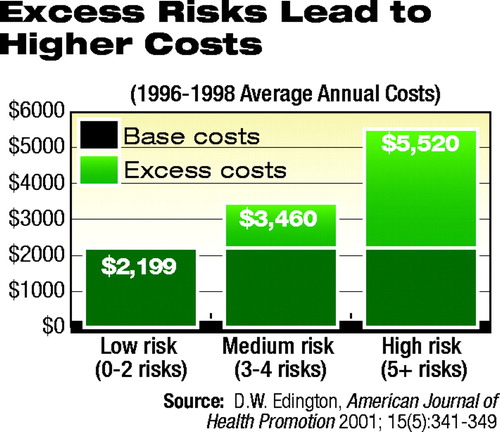APA, Employers Consider Workplace Health Costs
APA had a seat at the table of an invitational meeting where experts labored to develop working partnerships among employers, managed behavioral health care organizations, mental health professionals, pharmaceutical manufacturers, and pharmaceutical benefits managers.
The occasion was the Employer Summit II: Tactics and Partnerships for Managing Pharmaceuticals in Behavioral Health, sponsored by Comprehensive NeuroScience Inc., Pfizer Inc., and Wyeth in September in Washington, D.C. The meeting preceded the Behavioral Healthcare and Informatics Tomorrow (BHIT) Conference.
A key goal, according to the meeting planners, was the identification of “major issues that stem from increasing use and cost of behavioral health pharmaceuticals under employer-sponsored health plans and tactics to address them.”
The meeting was also designed to provide participants with “elements of a tactical plan to manage rising pharmaceutical costs while improving productivity through compliance and disease management.”
Several speakers approached those issues by showing links between employees’ health and their productivity and by discussing the integration of mental health services with other health programs.
In her opening address, Catherine Baase, M.D., global director for health services of Dow Chemical Company, emphasized an important theme of the meeting.
She quoted Jim Loehr and Tony Schwartz, who wrote in the January 2001 Harvard Business Review, “Data and research have proven that for companies to achieve breakthrough growth and success, they must . . .focus on all of the elements of human performance—the body, the emotions, the spirit—and consider the person as a whole.”
That integrative approach toward employee performance should also be reflected in management structures and analysis, she said.
Baase advised integrating direct and indirect costs in analyzing how employees’ health affects productivity and profits. The results of absenteeism and presenteeism are examples of indirect costs.
She also encouraged integrating various kinds of health-related expenditures—such as workers’ compensation, safety initiatives, health promotion, as well as health benefits—to reach a total figure of how much is spent promoting the health of employees.
Baase told the audience of health benefits managers that they should present health-related expenses to management as investments in the workforce, rather than as costs to the company.
In a luncheon keynote speech, Dee W. Edington, Ph.D., director of the Health Management Research Center at the University of Michigan, spoke about the economic benefits of maintaining healthy companies.
He listed 15 health risk factors that can be used to predict the risk category of each employee. Risk factors include items related to mental health such as stress, job satisfaction, and life satisfaction, as well as more conventional factors such as blood pressure and cholesterol levels.
For example, a person who reports being "partly or not satisfied" with the job would be determined to have be at high-risk for that factor. Taking more than five sick days in the previous year would mean that the person met the high-risk criteria for the "illness days" factor.
 Edington defines low-risk employees as those who meet the high-risk criteria for no more than two out of the 15 risk factors. High-risk employees are those who meet the criteria for five or more factors. He reported that the medical expenses of an employee in the high-risk category were more than double those of the low-risk category (see chart).
Edington defines low-risk employees as those who meet the high-risk criteria for no more than two out of the 15 risk factors. High-risk employees are those who meet the criteria for five or more factors. He reported that the medical expenses of an employee in the high-risk category were more than double those of the low-risk category (see chart).
Representing APA at the meeting was Norman Clemens, M.D., chair of the Committee on APA/Business Relations. At a concluding session, Clemens expressed his enthusiasm about the ideas that had come out of the sessions and emphasized the importance of including psychiatrists in discussions about workplace health issues.
Clemens called attention to the role psychiatrists play in prescribing medication and enhancing compliance by the relationships they develop with patients.
He told attendees that his committee is planning a session on workplace issues at APA’s next annual meeting, adding that it is important to overcome the disconnect between the concerns of psychiatrists and those of business people.
Sandra Forquer, Ph.D., cochair of the BHIT conference, told Psychiatric News that she and others were analyzing results of a survey of Employer Summit attendees to determine how participants want to build on the momentum of the summit.
“The idea of a virtual coalition generated a lot of interest,” she said. Members could continue to build partnerships by sharing ideas and information electronically.
They also expressed interest in ways of making the business case for mental health benefits.
The results of the survey will be posted at www.bhitomorrow.com late this month. ▪



